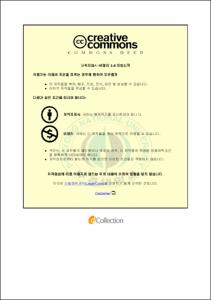의 교수·학습 방안 연구
- Abstract
- A Study on the Teaching and Learning Method of
- Focused on the characteristics of Dialogic Gasa
Seung Nam Kim
Graduate School of Education
Pukyong National University
Abstract
Gasa Literature has commonly been studied to make meaning of its contents and collect information of representative works so far. It is a genre which has multiple characteristics including both a verse form and a content of prose. A dialogue in Gasa Literature is a significant literary device which supports its theme, narrative structure, objectivity and reality. For these several features, is chosen and studied in this paper.
The purpose of this paper is to analyze Gasa's dialogue in a narrative structure through and discuss its literary value. And this study designed a teaching method of to establish current classical literature education.
is an authentic text of verse which shows a narrative dialogue for a poetic effect as well as beauty of Hangeul.
This dialogue style maximized the author's purpose and provided reality. Considering other Gasa works written by the noble class in early-Choseon, it is remarkably distinguished. Based on this, is a valuable text to understand the flow of Gasa Literature.
The characteristics of Gasa's dialogue through expand a point of view on Gasa Literature and help the learners understand other dialogic texts of Gasa. For that reason, the learners should analyze the features of a dialogic Gasa text in advance. This study analyzed the narrative structure, the theme through the female speaker and embodiment of the subject in the poem. Also its tetra metre, metaphor and symbol were discussed.
The method of teaching based on the requisites above consists of the following stages;
In the first planning stage, a goal is set to plan a guidance of teaching and learning the chosen text.
In the second stage, the learners call their prior knowledge to activate motivation. A teacher can make a diagnosis which is considered for adjusting a teaching plan. The goal is reset by instructional adaptation and achievement standards.
In the third stage, the learners participate in various activities using a whole-part-whole method.
In the fourth stage, the goal is evaluated by the leaners individually or in a small group.
The fifth stage helps the learners analyze other Gasa texts and engage in a writing workshop to internalize what they have learned. And performance assessment is followed after internalization.
Classical Gasa Literature education is not simply for an aesthetic experience but also its educational value which makes the learners explore the text structures, themes, figurative languages and the authors' purposes through an explicit plan, effective activities and a teacher's promptings. Going back to the past to teach and learn classical texts is not effortless. However exploring Dialogic Gasa is meaningful.
- Issued Date
- 2012
- Awarded Date
- 2012. 8
- Type
- Dissertation
- Publisher
- 부경대학교
- Affiliation
- 부경대학교 교육대학원
- Department
- 교육대학원 국어교육전공
- Advisor
- 고순희
- Table Of Contents
- Ⅰ. 서론 1
1. 연구 목적 1
2. 연구사 검토 7
2.1. 대화체 가사에 대한 연구 7
2.2. 교육에 대한 연구 10
2.3. 대화체 가사 교육에 대한 연구 15
3. 연구 방법 17
Ⅱ. 대화체 가사의 특성과 의 교육 내용 20
1. 대화체 가사 의 문학적 특성 20
1.1. 가사문학과 대화체 가사 20
1.2. 의 문학적 특성과 대화체 24
2. 대화체 가사 의 교육적 의의와 교육 내용 28
2.1. 의 교육적 의의 28
2.2. 대화체 가사 의 교육 내용 31
Ⅲ. 대화체 가사 텍스트를 활용한 의 교육방안 46
1. 가사 문학의 교육 실태 분석 46
1.1. ‘국어’ 교과서의 가사 문학 수록 현황 46
1.2. 이 수록된 국어 교과서 분석 49
2. 의 교수 ․ 학습 방안 62
2.1. 의 교수 ․ 학습 계획 64
2.2. 의 교수 ․ 학습 실제 82
Ⅳ. 결론 88
참고문헌 92
- Degree
- Master
- Files in This Item:
-
-
Download
 <속미인곡>의 교수·학습 방안 연구.pdf
기타 데이터 / 4.72 MB / Adobe PDF
<속미인곡>의 교수·학습 방안 연구.pdf
기타 데이터 / 4.72 MB / Adobe PDF
-
Items in Repository are protected by copyright, with all rights reserved, unless otherwise indicated.